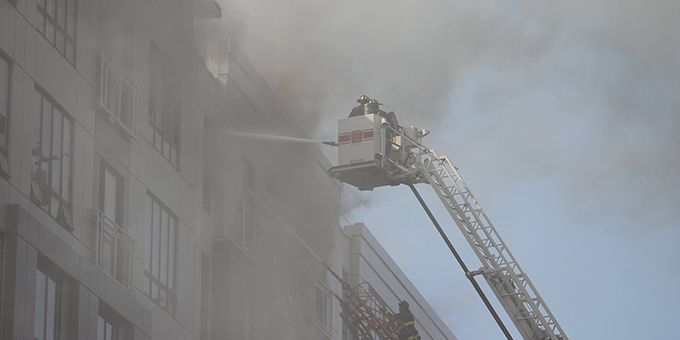Robots may have been accused of stealing jobs, but they're actually doing more than most people realize to keep workers safe as they go about their daily tasks. Let's take a closer look at five more ways that robots are helping to accomplish this.
 5 More Ways Robots Keep People Safe
5 More Ways Robots Keep People Safe

Kayla Matthews | Productivity Bytes
1. Training Military Personel
While military personnel will experience live-fire exercises during their training, they may not fire at moving targets until they are deployed. This can be dangerous, leaving soldiers at a disadvantage if they're in a life-threatening situation. One Australian robotics startup is working to change this by creating robots that soldiers can shoot with real bullets.
The T40 robots are mounted on a wheeled platform and topped with a human-shaped dummy. Each robot can be dressed to look like enemy soldiers, civilian bystanders or anything in between.
They're programmed to move autonomously and can mimic guard duty, patrol routes or just people going about their daily errands, depending on the needs of the scenario. These robots might take a beating, but they provide solders with a live-fire experience that could save their lives in a combat situation.
2. Assessing Burning Buildings
Firefighters train to make their way into burning buildings to put out fires and rescue anyone trapped inside. It's one of the most dangerous jobs on the planet, but it's one that's necessary as long as homes and buildings are made from or contain flammable materials. Navigating a flame and smoke-filled building is both challenging and dangerous, and that's where SmokeBot comes in.
These fire-ready robots navigate their way through burning buildings, creating interior maps that firefighters can use to safely travel in and out of the structure. The robots can even stay in the building after it's no longer safe for human firefighters, monitoring the progress of the fire and capturing images of the damage as it happens.
3. Carrying out Aircraft Maintenance
Whether you're running an international airport or just launching two-seater planes for tourists, aircraft maintenance is a crucial part of any aviation business. Aircraft maintenance workers are always there, making sure your aircraft is safe to take off, but they're also at risk — especially since they tend to work non-traditional hours and may find it hard to get enough hours of sleep at night.
While robotics have been used for decades to assemble aircraft, they're just starting to make an appearance in the aftermarket aviation sectors. They make a great choice for afterhours aircraft maintenance.
4. Cleaning up Nuclear Sites
Nuclear energy might be a cleaner option than burning coal or other fossil fuels, but the waste it generates creates a significant threat to human health and wellness.
Cleaning up after a nuclear spill or a meltdown like the one that happened in Fukushima in 2011 is nearly impossible without fatal radiation exposure.
Without the water to cool the uranium fuel, it superheated, melted and burned through its container. Until recently, they couldn't even send robots into the Fukushima reactor without them melting into slag.
Little Sunfish is the only robot that was able to survive the interior of the Fukushima reactor, finding the missing fuel that had melted its way through its container and escaped into the surrounding area. Not only is this assisting with the cleanup of the area around the reactor, but it's also keeping workers safe and keeping them away from the dangerous radiation that still affects the area around the plant.
5. Completing Search and Rescue
Search and rescue after a disaster can save lives, but what can emergency workers do if the area isn't safe for them to navigate? Trying to traverse these dangerous areas could just end up with more people in need of rescue.
SAR Bots — search and rescue robots — are saving lives by navigating disaster zones, finding survivors and even delivering them food and water while they wait for emergency services to reach them.
After a disaster, whether natural or human-made, SAR bots can map disaster zones, informing emergency workers of the safest possible path so they don't end up in trouble themselves. These bots can detect signs of life under debris and even dispose of bombs, depending on the situation. Search and rescue bots are quickly becoming invaluable tools, saving lives during disasters.
Improving Safety One Robot at a Time
Did any of these robotics applications surprise you? While they might be accused of stealing jobs, these little bots are making life safer for people across a great number of different industries.
If you like this article you may like "Smart Gripper for Small Collaborative Robots"
The content & opinions in this article are the author’s and do not necessarily represent the views of RoboticsTomorrow
Comments (0)
This post does not have any comments. Be the first to leave a comment below.
Featured Product

